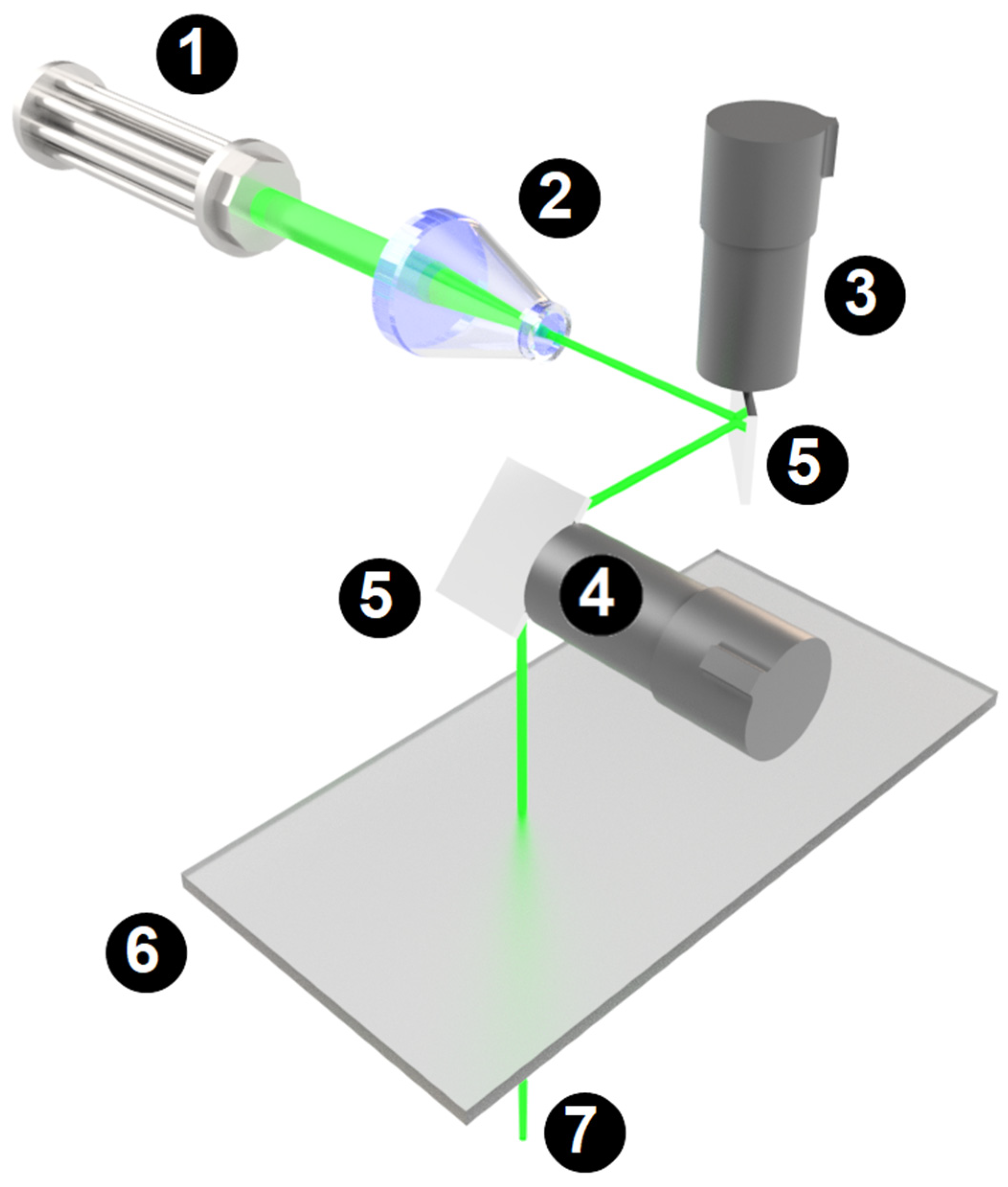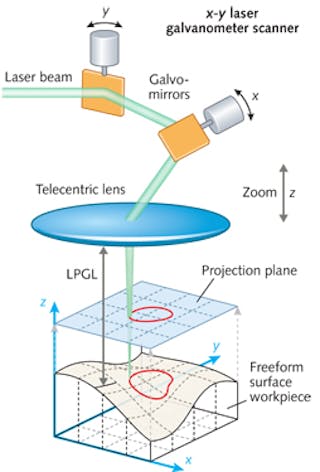The Importance of Calibration in Optimizing Your Galvanometer Scanner's Efficiency
The Importance of Calibration in Optimizing Your Galvanometer Scanner's Efficiency
Blog Article
Secret Applications of a Galvanometer Scanner in Various Scientific Study Area
Galvanometer scanners have become integral to different scientific research fields, providing improved accuracy in applications ranging from biomedical imaging to ecological monitoring. As we explore the diverse applications of galvanometer scanners, it comes to be obvious that their effect extends far beyond mere technical capabilities, raising inquiries regarding their future capacity in emerging research study areas.
Biomedical Imaging

In confocal microscopy, galvanometer scanners help with the acquisition of pictures with enhanced resolution and comparison, permitting scientists to visualize cellular elements in vivo. The capacity to swiftly catch several focal planes enhances the three-dimensional restoration of cells, supplying vital insights into their architecture and function.

Moreover, the fast scanning capabilities of galvanometer systems contribute to advancements in dynamic imaging applications, such as checking cellular reactions to stimuli. Galvanometer scanners are indispensable devices in the area of biomedical imaging, advancing study and professional diagnostics via their accuracy and performance.
Product Processing
Accuracy in material processing is essential for accomplishing top notch cause various industrial applications (galvanometer scanner). Galvanometer scanners play an important function in enhancing this precision by making it possible for fast and exact activity control during the processing of materials such as polymers, porcelains, and steels. These tools help with methods like laser welding, engraving, and cutting, which require finely-tuned modifications to ensure ideal results
In laser cutting, for example, galvanometer scanners enable detailed layouts to be executed with high fidelity, minimizing waste and enhancing manufacturing effectiveness. The fast activity capacities enable quick changes in the laser beam of light course, which is essential for preserving regular cutting top quality across varying product thicknesses. Likewise, in laser welding applications, the precision offered by galvanometer scanners guarantees solid joints with very little thermal distortion, thereby enhancing structural stability.
In addition, the adaptability of galvanometer scanners to different laser types and wavelengths further broadens their energy in material handling. Their ability to operate in tandem with innovative software for real-time tracking and control adds an additional layer of refinement, making it possible for makers to attain exact requirements tailored to specific applications. Thus, galvanometer scanners are vital beforehand the abilities of material handling innovations.
Optical Characterization
In the realm of optical characterization, the role of galvanometer scanners ends up being progressively considerable as they help with the analysis of numerous optical properties with high precision. These devices enable precise control of laser beam of lights, enabling researchers to methodically penetrate products at several angles and frequencies. This ability is important for identifying the refractive index, absorption coefficient, and spreading residential or commercial properties of varied materials.
Galvanometer scanners are especially effective in strategies such as optical comprehensibility tomography (OCT) and laser-induced fluorescence (LIF), where rapid scanning is crucial. By achieving high-speed inflection of the laser setting, galvanometer scanners improve the temporal resolution of these methods, leading to boosted imaging and analysis. Furthermore, they make it possible for the exploration of intricate interactions in between light and issue, which is vital for comprehending material actions under various conditions.
In addition, the integration of galvanometer scanners with spectroscopic methods increases their energy, permitting detailed spectral analysis across a wide array of wavelengths. This convenience makes them indispensable tools in areas such as materials scientific research, biomedical research study, and nanotechnology, where detailed optical characterization is extremely important for advancing expertise and innovation.

Laser Micromachining
The introduction of laser micromachining has actually revolutionized manufacturing processes, enabling the development of intricate frameworks with unrivaled precision. This technique utilizes high-intensity laser beams to specifically eliminate product from a substratum, making it feasible to produce micro-scale elements that are critical in various markets. The application of galvanometer scanners in laser micromachining enhances the effectiveness and precision of this process by permitting precise and rapid beam of light positioning.
Galvanometer scanners facilitate the vibrant control of laser beams, allowing intricate patterns to be engraved or reduced with high fidelity. Their rapid response times and high-resolution abilities enable for the control of laser pulses, which is necessary for attaining the desired product residential or commercial properties and surface area finishes. This technology is particularly helpful in sectors such as electronic devices, where the miniaturization of parts is essential for performance enhancement.
In addition, laser micromachining is progressively being used in the medical area for making accuracy instruments and implants. The mix of laser technology and galvanometer scanning not only simplifies manufacturing workflows yet also decreases waste and enhances total product utilization, making it a lasting choice for contemporary manufacturing obstacles.
Ecological Tracking
Ecological tracking has actually ended up being progressively vital in examining and taking care of the health of ecosystems and metropolitan environments. The assimilation of galvanometer scanners in this field makes it possible for precise, click for source fast, and effective information collection, promoting much better decision-making procedures. These scanners are adept at guiding laser light beams or sensing units across numerous terrains, permitting high-resolution mapping of ecological specifications such as air high quality, soil make-up, and water pollution.
In air high quality tracking, galvanometer scanners can be employed to special info analyze particle matter and aeriform toxins, supplying real-time information that notifies public health and wellness initiatives. For water quality analyses, these scanners can aid in detecting contaminants and determining physical specifications, thus making certain compliance with environmental laws. Additionally, in remote picking up applications, galvanometer scanners enhance the ability of satellite and drone systems to capture thorough photos and data of large areas, recognizing anthropogenic effects and ecological changes.
The flexibility and precision of galvanometer scanners make them crucial tools in environmental monitoring, contributing dramatically to sustainable development efforts and the defense of all-natural resources. As the requirement for effective environmental management grows, the function of these sophisticated gadgets will certainly increase further.
Final Thought
In recap, galvanometer scanners work as important tools throughout multiple clinical study domain names. Their application in biomedical imaging boosts the accuracy of techniques vital for cellular visualization and diagnostics. In product handling, these scanners facilitate sophisticated laser cutting and welding procedures, making sure marginal distortion. Their function in ecological monitoring highlights the relevance of precise data collection in resolving public wellness and ecological obstacles. The versatility and effectiveness of galvanometer scanners continue to drive advancements in these vital areas.
In laser welding applications, the precision supplied by galvanometer scanners makes sure solid joints with very little thermal distortion, thus improving structural stability.
Furthermore, the versatility of galvanometer scanners to different laser types and wavelengths further expands their utility in product handling. By attaining high-speed inflection of the laser position, galvanometer scanners boost the temporal resolution of these approaches, leading to improved imaging and analysis. The application of galvanometer scanners in laser micromachining boosts the performance and precision of this process by allowing quick and precise beam positioning.
Galvanometer scanners assist in the vibrant control of laser beams, making it possible for complicated see this here patterns to be etched or cut with high fidelity.
Report this page